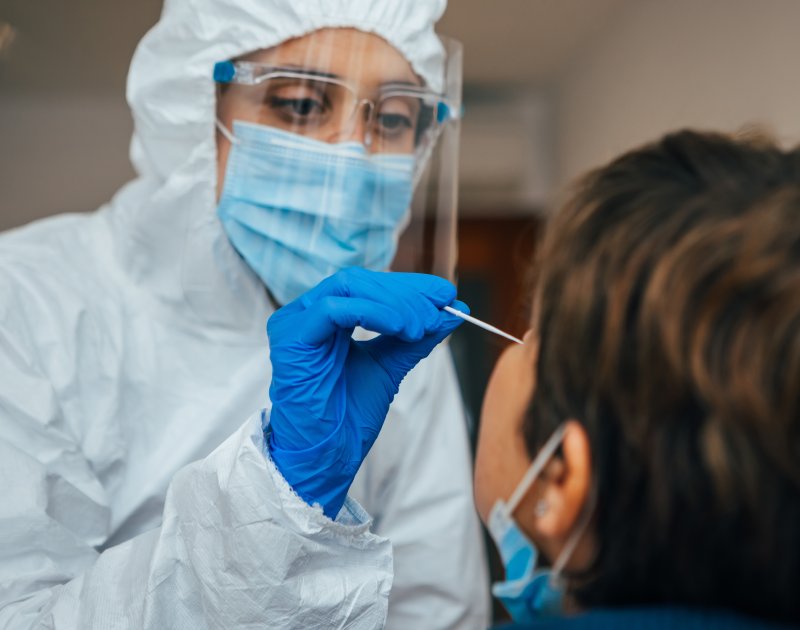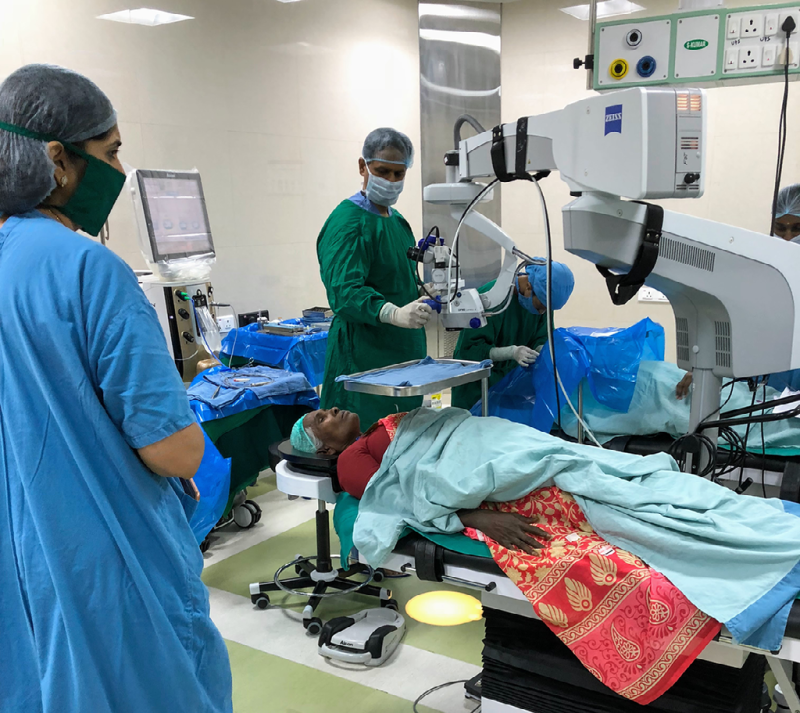International Research Saves Lives
Health at the Point of Care
Cornell’s PORTENT develops mobile diagnostics for real-world impact.
One-third of premature deaths in the United States are linked to preventable or manageable health conditions—yet early, accessible diagnostics remain out of reach for many communities. PORTENT is closing that gap with point-of-care tools that bring real-time health screenings to clinics, pharmacies, and homes.
Diagnostic Power in Your Hand
Two PORTENT-supported innovations highlight this mission. Developed by David Erickson (Cornell Engineering) and team in collaboration with the U.S. Army, FeverPhone rapidly differentiates among deadly viral infections like Ebola, Marburg, and Lassa—offering vital support for military and civilian health responders in outbreak zones.
AnemiaPhone, developed by Saurabh Mehta (Cornell Human Ecology) and colleagues, delivers fast, low-cost iron deficiency screening using just one drop of blood. Now integrated into India’s national health programs, the tool is informing U.S. approaches to precision nutrition and last-mile care.
“We’re not trying to replace traditional labs, but to extend their reach.”
Medical Collaboration Trains Doctors and Saves Lives
In Haiti, Weill Cornell Medicine’s partnership with GHESKIO clinics has supported decades of groundbreaking clinical research on HIV/AIDS, changing treatment protocols and improving the lives of millions.
1.2 million people in the U.S. are living with HIV/AIDS.
In Tanzania, a Cornell-founded medical school trains doctors who deliver care in some of the world’s most underserved areas—and helped contain a deadly Marburg virus outbreak.
Chronicle: Transforming Health Care in Tanzania Series
In Qatar, a Cornell medical program is shaping future healthcare leaders across the Middle East and facilitating our ability to react to global medical emergencies like COVID-19.
Preventing the Next Pandemic
Research on how viruses move from animals to people is vital to health in the U.S. but needs to start internationally—because most of the diseases that could become pandemics do. With fieldwork and collaborators in Australia and Bangladesh, Raina Plowright (Cornell University College of Veterinary Medicine) made early predictions of viral spillovers and showed how climate shifts and habitat loss increase zoonotic disease emergence. This research helped shape the WHO Pandemic Agreement and the World Bank Pandemic Fund, supporting prevention as a global priority.
These insights guide how the U.S. and nations everywhere prepare for and prevent future pandemics—starting at the source.
Seeing Eye Care Clearly
Aravind Eye Hospital system in India is the largest nonprofit eye hospital in the world. Award-winning research by Sachin Gupta (Cornell SC Johnson College of Business) uncovered important differences between male and female patients: the women had worse vision and more cataracts—yet spending on male patients was 10% higher because more received implanted lenses.
The data set also informed important findings on resource allocation at healthcare nonprofits. Gupta’s insights have shaped vision care and spending across South Asia. The World Health Organization and U.S. healthcare systems use the results for strategic resource planning to help more patients see clearly.
Tackling Hidden Toxins in Food Systems
In Africa, malnutrition and climate change go hand in hand. Public and ecosystem health research from Laura Smith (Veterinary College), conducted in partnership with Zimbabwe’s government, clarified the link between childhood stunting and exposure during pregnancy and infancy to mycotoxins—poisons produced when molds contaminate crops like corn.
In the United States, over 90% of the population is exposed to mycotoxins at least once, with symptoms ranging from GI distress to cancer.
The USDA reports U.S. economic losses due to mycotoxins in corn, wheat, and peanuts total $930 million annually.
Next Up: Education | Return to: International Research Matters for the United States







